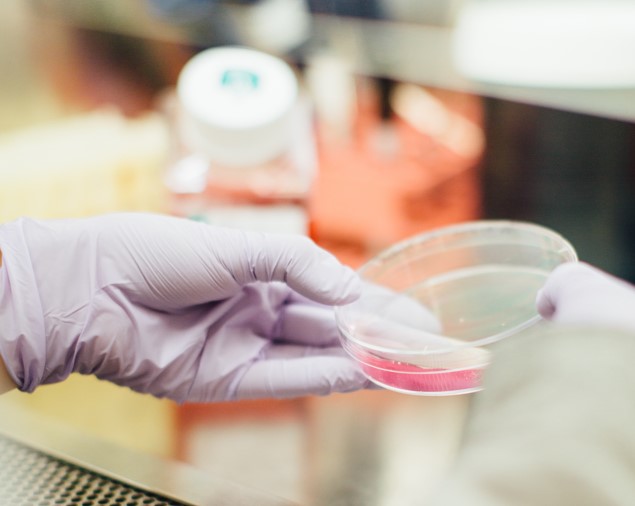For years, vegetarians have turned to meat alternatives, like soy-based patties and plant protein “chicken.” But for meat lovers, a steak has always been just that — a piece of cow. Until now. The leaps we see in tech aren’t confined to our gadgets. They’re revolutionizing our meals, too.
Food technology is on the rise, and it’s nudging lab-grown meat ever closer to your dinner plate. As per a recent Bloomberg report from December 2020, this cultured meat might soon occupy supermarket aisles.
But many wonder: Is this lab-crafted steak good for us? How does it measure up in taste to its farm-raised counterpart? Join us as we delve into these intriguing questions and explore the unfolding world of artificial meat.
Table of Contents
What is lab-grown meat?
Most of us understand meat in the traditional sense: animals are bred, they’re eventually slaughtered, and their meat is then packaged for sale. Lab-grown meat flips this script. So, how does it work?
At its core, lab-grown meat starts with stem cells taken from a donor animal’s muscle tissue. Instead of sourcing meat from a whole, living animal, these cells serve as the building blocks. To help these cells grow, they’re mixed with a serum, which, interestingly, often comes from the fetuses of deceased cows.
Once combined, these cells are given sugars and salts. This “feeds” them, making them believe they’re still inside a living creature and prompting them to grow. As days pass, these muscle stem cells change. They strengthen, expand, and eventually mature into muscle fibers. Once you have enough of these fibers together, voila! You’ve got a piece of meat.
To make this lab meat taste like the real deal, fat tissue is sometimes introduced. This imparts a flavor profile similar to traditional meats. And just like that, from petri dish to plate, dinner is served.
But, what about vegetarians and vegans? Since lab-grown meat still involves animal-derived products, it doesn’t qualify as vegan or vegetarian. Those adhering strictly to plant-based diets will need to continue reaching for soy, tofu, and other alternative protein sources.
The benefits of lab-grown meat
Let’s dive into the compelling reasons to consider lab-grown meat:
1. Planet-friendly: One of the biggest pluses of lab meat is its eco-friendliness. Traditional livestock farming releases a ton of greenhouse gases, especially methane. With lab-grown meat, these emissions can be slashed significantly.
2. Space saver: Think of the vast tracts of land used for raising cattle and poultry. It’s a space-intensive affair. Lab methods, in contrast, are far more compact. Adopting them might free up land for forests, agriculture, or even housing, reimagining our landscape.
3. Water conservation: Traditional meat production consumes gallons of water, from animal hydration to processing. Lab-grown meat, being a controlled process, can drastically curtail this water use. In times where water scarcity is a rising concern, every drop saved counts.
4. Ethical eating: The ethical implications of livestock farming have been debated extensively. Lab-grown meat offers a solution. With no need for slaughter, it represents a humane, compassionate way of getting that burger onto your plate.
5. Healthier choices: We often hear concerns about the antibiotics, hormones, and other additives in our meats. Lab-grown alternatives could potentially eliminate these, allowing for pure, untainted meat. Plus, there’s room for customization—like higher omega-3 content, perhaps?
6. Food security: With increasing global populations and unpredictable climate changes affecting farming, food security is pivotal. Lab-grown meat, producible in any suitable facility – even in urban hubs – promises a stable, uninterrupted supply. No more dependency on vast pastures or favorable weather patterns.
Read also: Food security under the global standard: the 10 most malnourished countries
Potential dangers and concerns
Lab-grown meat sounds promising, but it’s essential to weigh in on potential issues. Let’s take a deeper dive:
1. Unknown long-term effects: The biggest lingering question is long-term safety. Lab-grown meat is relatively new to our diets, and without decades of consumption data, we can’t be entirely sure of its lasting impacts on human health. Could there be undiscovered side effects that surface only after prolonged intake?
2. Nutritional differences: Lab meat may look like its traditional counterpart, but what’s on the inside? While it aims to replicate the nutritional profile of farm-raised meat, slight variations could exist. It’s essential to understand these differences, ensuring we’re still getting the right nutrients in adequate amounts.
3. Economic impact: A shift to lab-grown meat could dramatically impact the traditional farming industry. From cattle ranchers to feed suppliers, there’s an intricate web of livelihoods at stake. Transition plans and support for these sectors would be crucial if we’re moving towards a lab-grown future.
4. Natural vs. lab-grown debate: The “natural” tag is coveted. Many argue that lab-grown meat, despite its benefits, isn’t “natural” and fear we might be distancing ourselves from organic, time-tested farming methods. This philosophical debate on what we should eat and why is bound to continue.
5. Taste and texture: Flavor matters. While many find lab-grown meat comparable in taste to regular meat, others spot differences. Perfecting the texture, the juiciness, and the exact flavor profile remains a challenge. Will everyone be satisfied with the culinary experience it offers?
Should you try it?
Lab-grown meat is making waves, and many are curious. Should we give it a shot? On one hand, it promises a future where meat comes without the ethical baggage of slaughter. For the eco-conscious, it’s a nod to a more sustainable way of eating, potentially lightening our environmental footprint.
However, it’s still a newcomer to our plates. Health implications, especially long-term ones, are yet to be fully unraveled. And while some rave about its taste, others feel it doesn’t quite match up to the farm-fresh flavors they cherish.
Deciding to try lab-grown meat hinges on personal values and curiosity. Whether you’re eager to taste tomorrow’s food today or choose to wait, remember to stay informed and enjoy the culinary journey.
Read also: Beef, plant-based or cultivated: what is the climate impact of a burger?












